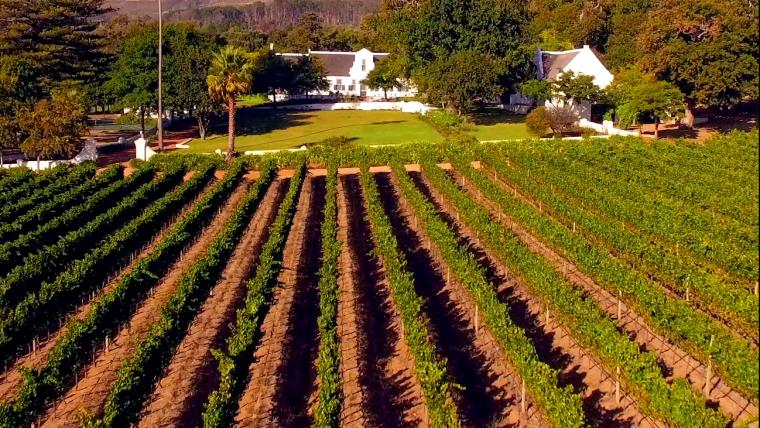
A 300-year-old tradition survives on the slopes of Table Mountain
Mist rolls over the sprawling vineyards. Cape Dutch homes sit on the hills, relics of a bygone era. As the city of Cape Town develops on the other side of the mountain, this landscape retains its sublime countryside appeal. The first grapevines, planted over 300 years ago, were the beginning of an illustrious tradition of viticulture along these slopes. For centuries, Klein Constantia has held its ground, producing some of the world’s most revered wines. Nineteenth-century writers, most notably Jane Austen and Charles Dickens, lauded the sweet Vin de Constance, cementing the vintage in the annals of winemaking history.
The success of its continued production is by virtue of the farm’s location. On the south-eastern slopes of Table Mountain, Constantia’s fertile soil consists of decomposed granite dating back 500 million years. Cool winds blow during the summer months, further ripening the flavourful muscat grapes. On the cusp of autumn, the harvest ensues. A flourish of action sweeps through the hills. In organised commotion, people handpick the produce, filling their crates to the brim. Above them, buzzards soar during their annual migration from Russia to the Cape. They’re just in time for the gathering of crops, scaring away other birds that try to eat the fruit. By the end of April, the raptors journey back north, freeing the skies for the arrival of starlings.
These vineyards are an ecosystem on their own, sustaining the area’s heritage. Established in 1685, Klein Constantia has survived through multiple eras and environmental change. Like clockwork, growth resumes on the eve of summer. If one thing is certain, it’s that these vines will continue to thrive with the seasons, creating alongside them a tranquil haven just minutes from the city. In South Africa, you don’t have to travel far to experience urban bustle and rustic charm in a single day.






























Please sign in to leave a comment